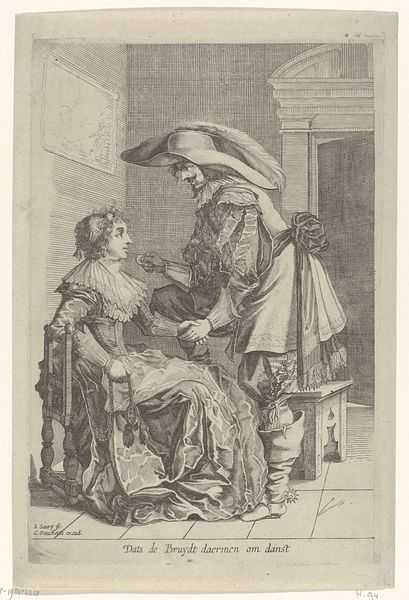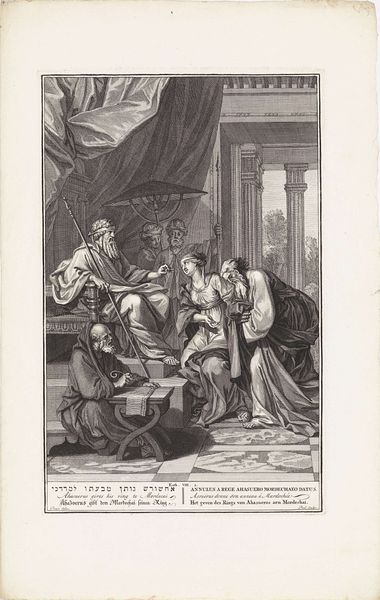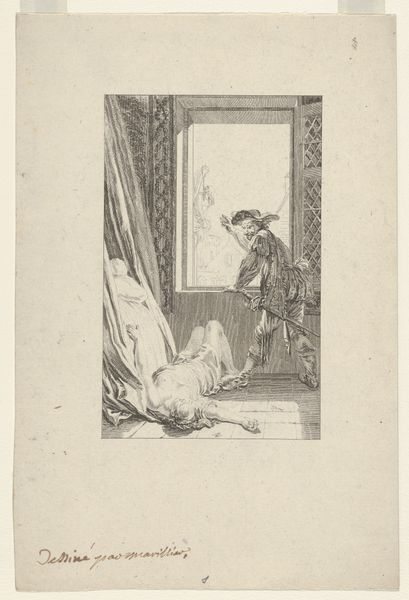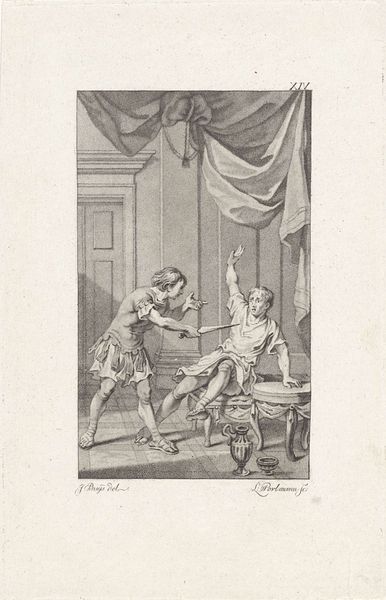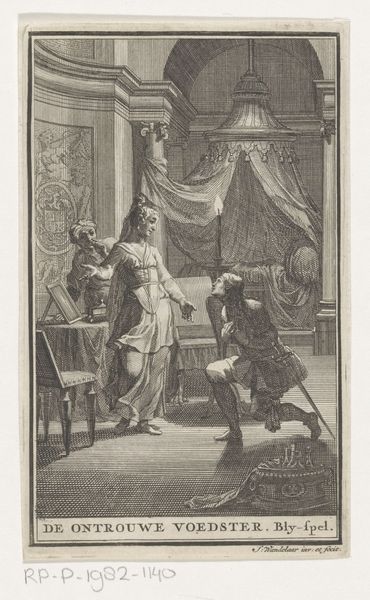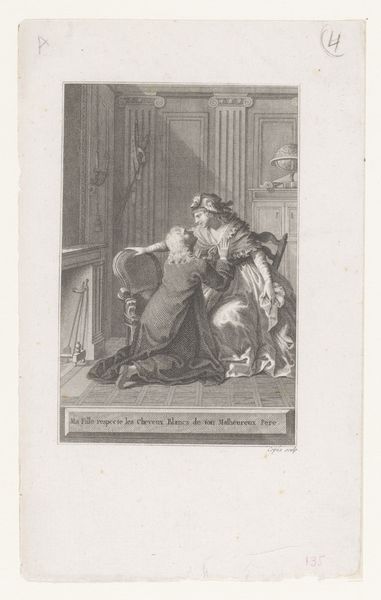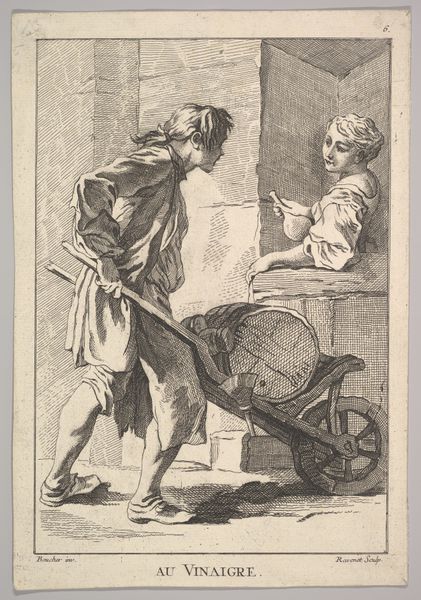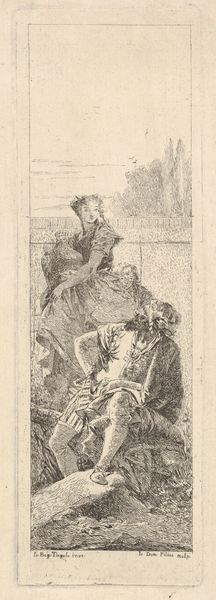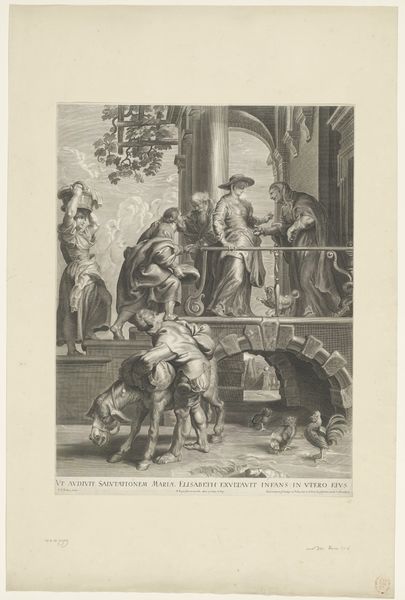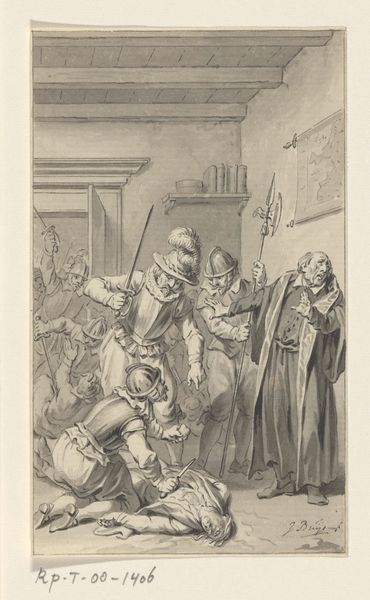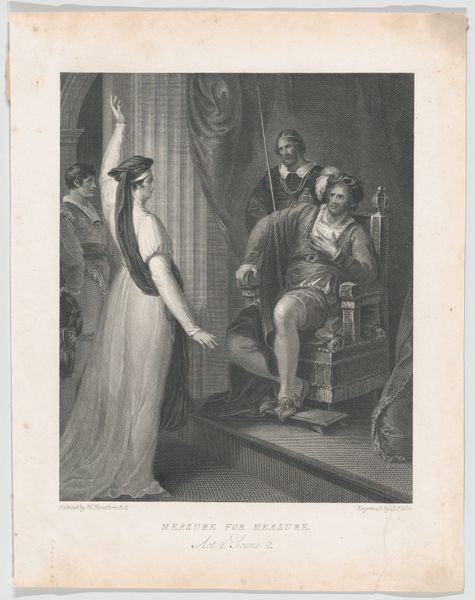
drawing, print, pencil
#
drawing
#
narrative-art
# print
#
figuration
#
pencil drawing
#
romanticism
#
pencil
#
history-painting
Dimensions: Image: 10 3/8 x 7 1/16 in. (26.3 x 17.9 cm) Sheet: 11 3/4 x 8 1/4 in. (29.9 x 21 cm)
Copyright: Public Domain
Curator: Eugène Delacroix's "Hamlet Attempts to Kill the King," dating from 1834 to 1843. It's a pencil drawing. What's striking you at first glance? Editor: It’s the hatching, so visible, so intense! Look how he builds volume just by layering the pencil strokes; and, beyond the prince's cold visage, there's this incredible tension you can almost *feel* rising from the page. Curator: The print captures a pivotal scene from Hamlet, doesn't it? The moment where Hamlet, sword in hand, almost takes the king's life as he is praying. It delves into the psychology of revenge, the conflict between impulse and reason. Delacroix returns to these themes time and time again. Editor: Precisely! This Romantic fascination with drama feeds into a modern cult of craftsmanship. I'm compelled to think about the graphite itself, where it came from, the hand holding the tool, how it all gets converted to value through a story. See the way it’s built: how pencil enables these tonal gradations for such an internalized moment of crisis. Curator: And this choice of medium, a humble pencil on paper, elevates a literary moment into something palpably real, doesn't it? Almost intimate in its execution. Editor: I keep coming back to what happens when a common material meets cultural worth, you know? In that sense, Delacroix democratizes tragedy a bit. Hamlet's agony, normally adorned, here just depends on some skilled hands applying raw minerals. Curator: And perhaps, by choosing a medium accessible to many, Delacroix invites us into that agony. It reminds us that these struggles are innately human, expressed even with the simplest means. Editor: Yes! Making it less about the King and Prince and more about the stuff that produces and disseminates such drama. It allows new reflections on value to take place. It’s all very circular! Thanks for pointing it out, that pencil certainly has an effect, does it not?
Comments
No comments
Be the first to comment and join the conversation on the ultimate creative platform.
